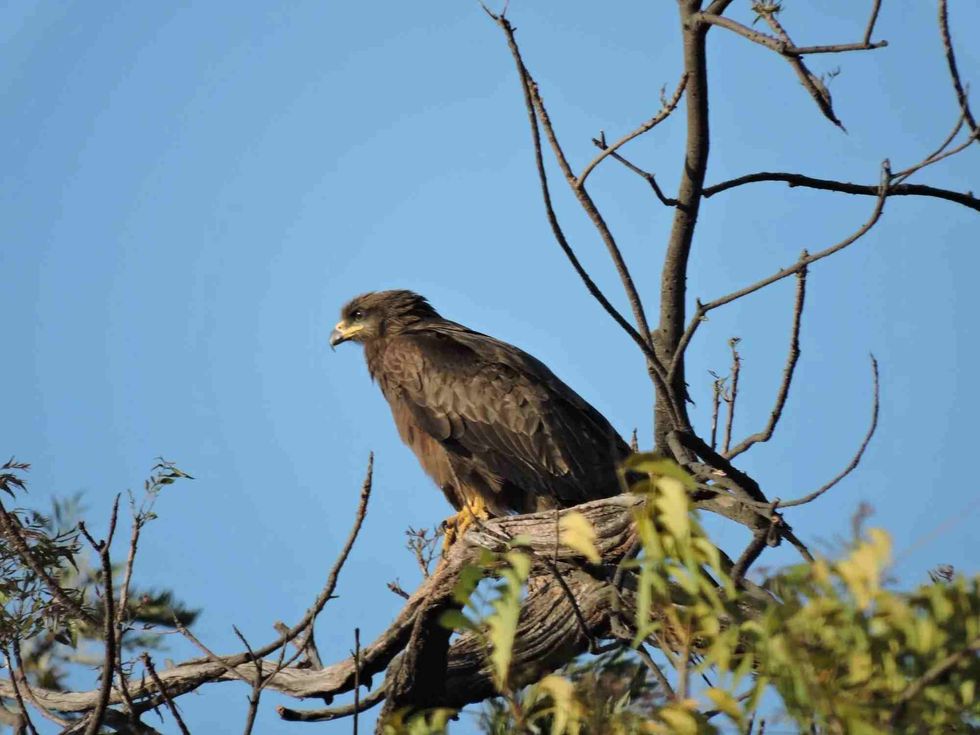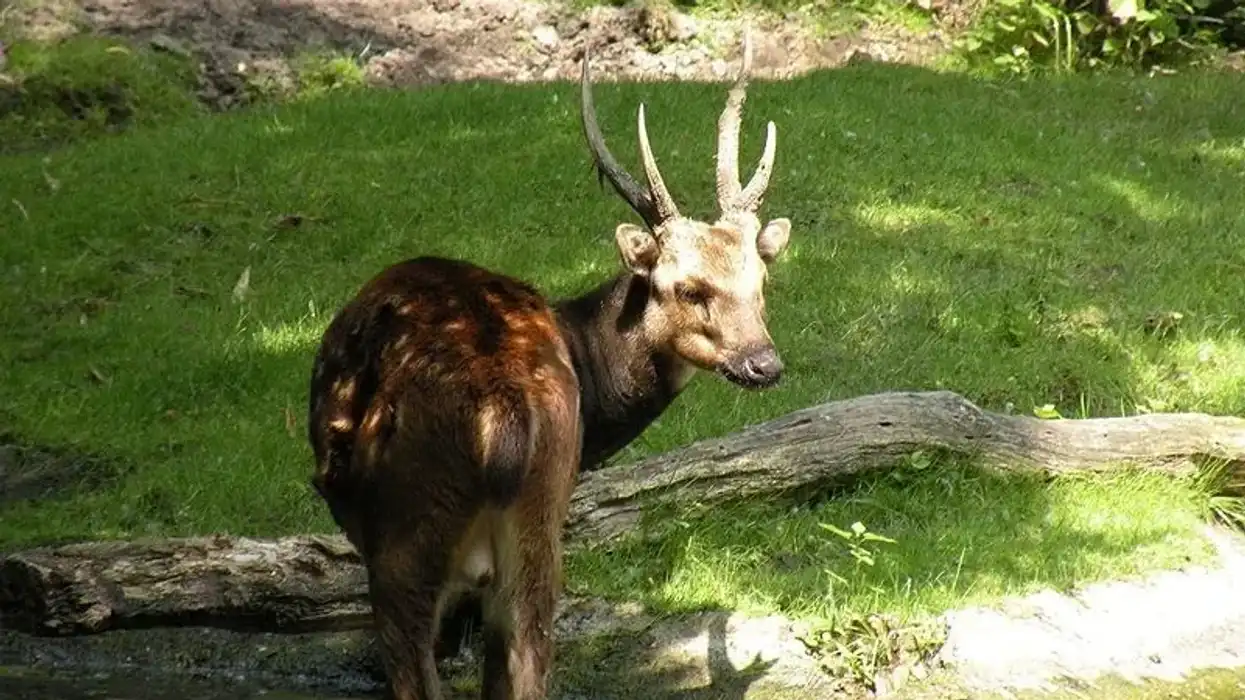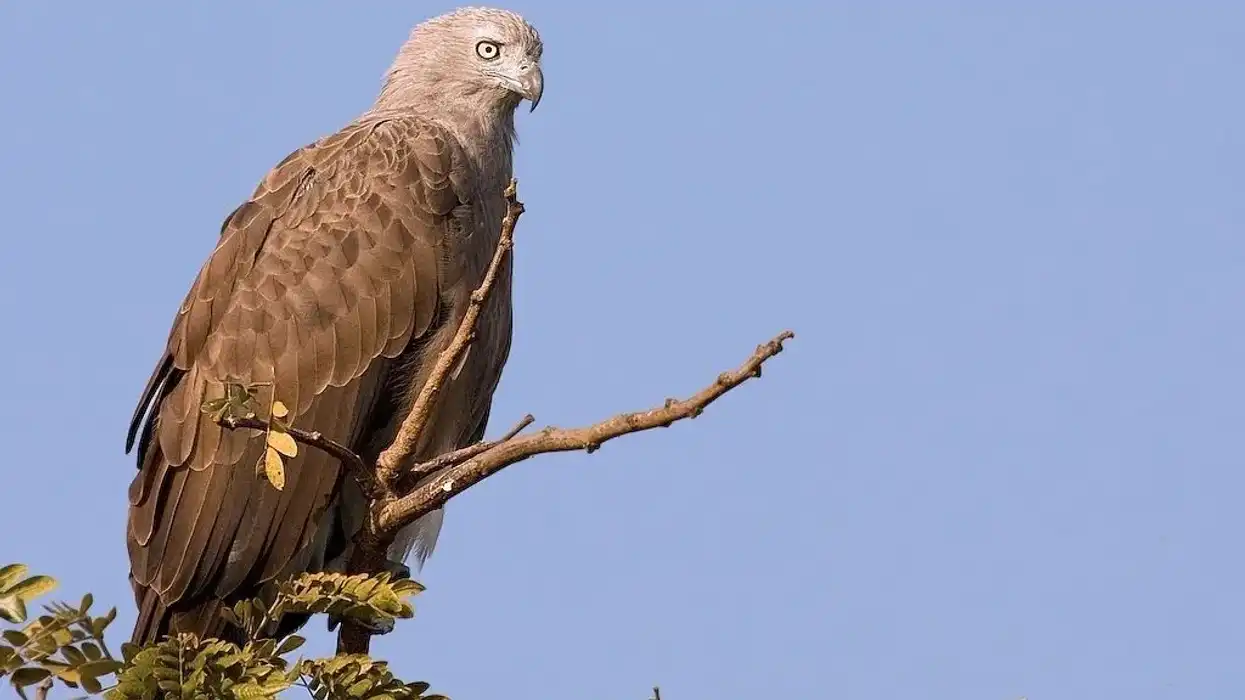Are you fascinated by eagles? Then here we have lots of fun facts about the greater spotted eagle.
The greater spotted eagle (Clanga clanga) is one of the largest raptors belonging to the Accipitridae family. They have two kinds of habitats, their breeding grounds and their wintering grounds.
During migration, these birds can cover 93.2 mi per (150 km). The population of this bird is threatened and the trend dictates that it is still decreasing. Many conservation efforts have been made and many countries have taken on efforts to preserve the bird on a national level.
Some international measures have also been taken. These birds lay only one to three eggs every breeding season, but many of them do not reach adulthood and die due to cainism and predation.
Hybridization of the species has been noticed and the number of these hybrids of the lesser and greater spotted eagle has been increasing. This is posing a threat to the growth of the greater spotted eagle's population as well.
Read on to know more about greater spotted eagles, and if you like this article, then also check out ourt articles on the sea eagle and collared falconet.
Greater Spotted Eagle Interesting Facts
What type of animal is a greater spotted eagle?
A greater spotted eagle (Clanga clanga) is a species of bird.
What class of animal does a greater spotted eagle belong to?
Greater spotted eagles belong to the family Accipitridae and class Aves of animals.
How many greater spotted eagles are there in the world?
According to the International Union for Conservation of Nature, the population of the greater spotted eagle bird in Europe is about 2430-3300 individuals. Europe has about 25-49% of the global population of this species.
This means that the total global population of these birds comes to around 5000-13200 individuals. The number of mature individuals globally is estimated at 3300-8800 by the IUCN.
Where does a greater spotted eagle live?
The greater spotted eagle range is spread across the Middle East, eastern Europe, Southeast Asia, Russia, and northern Africa. The breeding range of the birds is scattered across Kazakhstan, Belarus, Estonia, Mongolia, Poland, Pakistan, Ukraine, Russia, northwest India, and mainland China.
They are known to migrate and their wintering range is in the Middle East, southern Europe, Africa, and South Asia.
What is a greater spotted eagle's habitat?
The primary habitats of this species are wetlands and forests. In wetlands, they can be seen around peatlands, swamps, freshwater lakes, marshes, fens, or bogs. In forests, they live in tropical and subtropical mangrove forests, boreal forests, and in temperate forests and shrublands. These birds do not live in any high-altitude places.
Who do greater spotted eagles live with?
Greater spotted eagles are thought to be a solitary species. They only come together during the breeding season and when the parent birds are required to watch over the newborn chicks. During this time, these birds live as a family.
How long does a greater spotted eagle live?
Not much is known about how long the greater spotted eagle bird lives. Eagles, in general, live for 20-25 years on average. This is only if they survive when they are young. Most of this species like all eagles die before reaching adulthood. They show cainism behavior where the young newborns kill their siblings.
How do they reproduce?
Breeding season for these birds varies in accordance with their geographical habitat such as in northern China and Russia, breeding occurs in May. In India, breeding occurs from November to June.
For most parts of the rest of this bird's range, breeding occurs from April to August. Due to a lack of research, not much is known about the courtship behaviors of these birds.
The females lay about one to three eggs every season. The incubation period for the eggs is about 41-44 days.
The birds fledge after about 60-67 days, and they still stay in the nest under parental care for about 21 more days. The incubation is solely done by the female, but parental care is done by both the males and females.
What is their conservation status?
The conservation status of the greater spotted eagle according to the International Union for Conservation of Nature is listed as Vulnerable. These birds are protected on a national level by many countries of their habitat.
An international working group has even been made to conserve both greater and lesser spotted eagle birds. For the purpose of preserving these birds, they have been included in EU Birds Directive Annex I, CMS Appendix I and II, and in CITES Appendix II.
Greater Spotted Eagle Fun Facts
What do greater spotted eagles look like?
Greater spotted eagles are usually dark brown to black colored. They have dark brown eyes, black beaks, the flesh at the beginning of their upper beak is yellow, and the toes are yellow as well.
Wing coverts can be slightly darker in color than flight feathers. The young ones of these birds can be recognized by yellow to white spots on their upper wing coverts, back, rump and scapulars.
Sexual dimorphism can be seen very little in this species. The females are 50% heavier and 20% larger than the males of this species.
How cute are they?
These birds may not be cute, but they are gorgeous and majestic looking. These brown-colored large birds can be considered to be scary to a lot of people as well, but there hasn't been any report of these birds attacking any humans.
How do they communicate?
Greater spotted eagles communicate by vocal and visual means. These birds have great hearing skills and great vision as well.
They are quite vocal, particularly during the breeding season. Their vocal sound is high-pitched, short, and resembles the sound of a small dog. They have been heard to repeat 'dyip', 'tyuck' and 'kyack' sounds two to three times to communicate.
How big is a greater spotted eagle?
Greater spotted eagles are generally 23.2-28 in (59-71 cm) in length. Their wingspan is about 61-71 in (155-180 cm). These birds are slightly larger than the lesser spotted eagle which is about 21.2-25.6 in (54-65 cm) in length.
How fast can a greater spotted eagle fly?
During migration, the speed of these birds on average is 93.2 mi per day (150 km), but this speed can go up to around 217.5 mi per day (350 km).
How much does a greater spotted eagle weigh?
These are large birds and females are usually heavier than males. While adult females weigh about 4-5.5 lb (1.8-2.5 kg), adult males weigh about 3.3-4.2 lb (1.5-1.9 kg).
What are the male and female names of the species?
The males of this species are called cocks and females of this species are called hens.
What would you call a baby greater spotted eagle?
The babies of greater spotted eagles are called chicks, hatchlings, or nestlings.
What do they eat?
Greater spotted eagles are carnivorous in nature. Their diet majorly consists of small mammals. They are also known to prey on snakes, lizards, frogs, chameleons, fish, and water birds. When they have a scarcity of food, they prey on some insects as well.
Are they dangerous?
They feed on other mammals and birds, and their chicks are known to kill their siblings, so they are dangerous to other animals. However, there have been no reports of these birds attacking any human.
Would they make a good pet?
These are wild raptors that are also known for their migration habits for wintering. This means that replicating their exact required habitat would be nearly impossible.
They also hunt to feed. They might not have attacked humans, but if they feel threatened, they might do it. It is best to not keep them as pets and let them live in the wild.
Did you know...
Clanga clanga, or greater spotted eagles, sometimes build a nest of their own and sometimes use nests already built by other raptors. The nest is usually built 26.2-39.4 ft (8-12 m) above the ground, mostly on broadleaf trees.
They build the nest hundreds of feet away from the edge of forests or in case of the absence of trees, the birds build the nest on scrubs, cliffs, or bushes.
Why is the greater spotted eagle endangered?
The species has been deemed Vulnerable by the International Union for Conservation of Nature. The population of these birds has become endangered due to a few reasons.
The habitat range of the lesser spotted eagle and the mixed spotted eagle (a hybrid of lesser and greater spotted eagles) has started to overtake the habitat range of greater spotted eagles. Habitat loss due to wetland drainage, afforestation, and land conversion to agriculture is a big threat.
Other threats are illegal shooting, poaching, electrocution, and poisoning of the birds. In addition, most of these birds also don't reach adulthood due to cainism and predation.
What are the colors of the greater spotted eagle?
Adult greater spotted eagles are usually brown to black colored. In addition, juveniles have some yellow to white spots on their wings, scapulars, back, and rump.
Here at Kidadl, we have carefully created lots of interesting family-friendly animal facts for everyone to discover! Learn more about some other birds from our lesser kestrel facts and giant kingfisher facts pages.
You can even occupy yourself at home by coloring in one of our free printable greater spotted eagle coloring pages.










